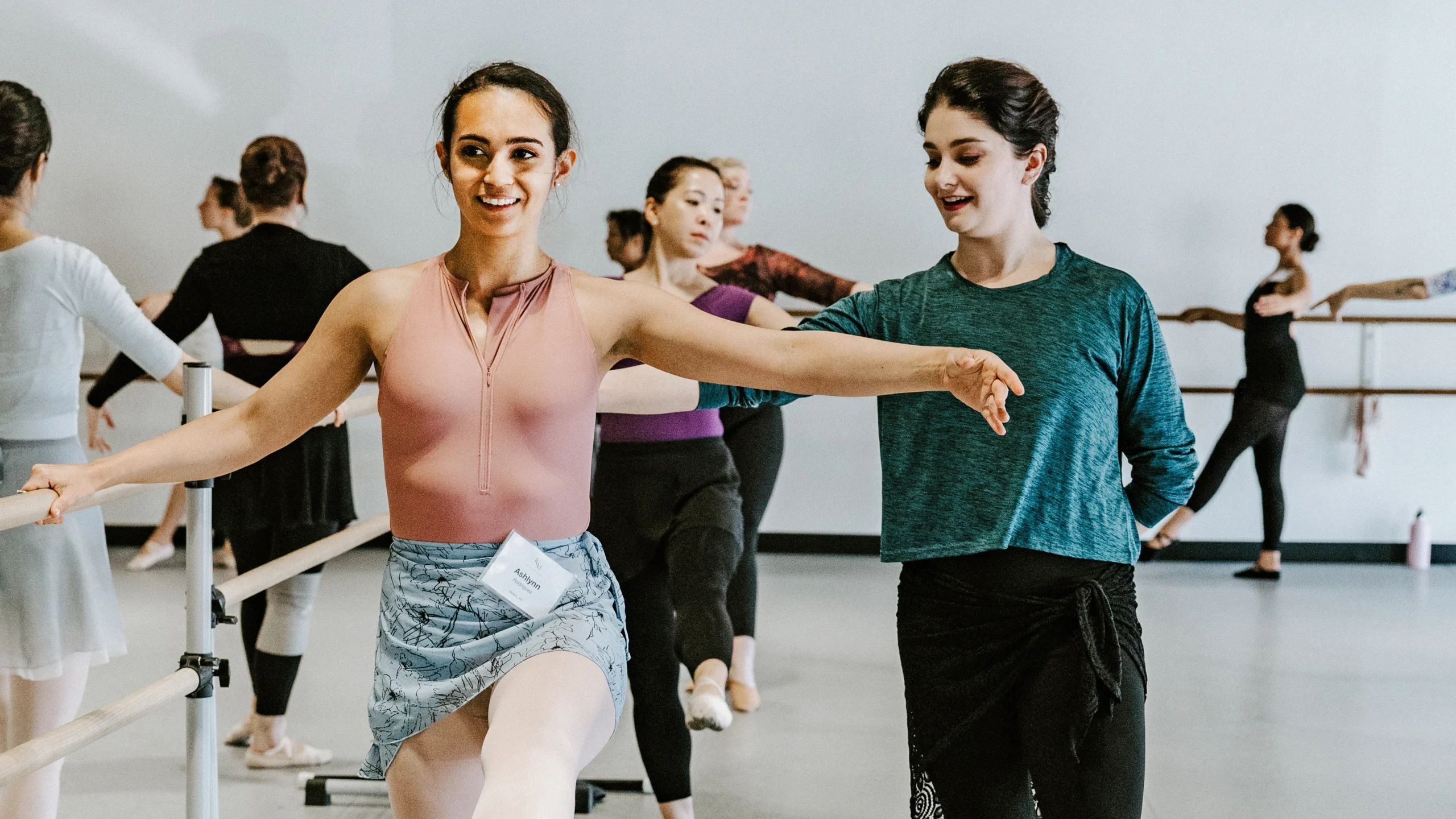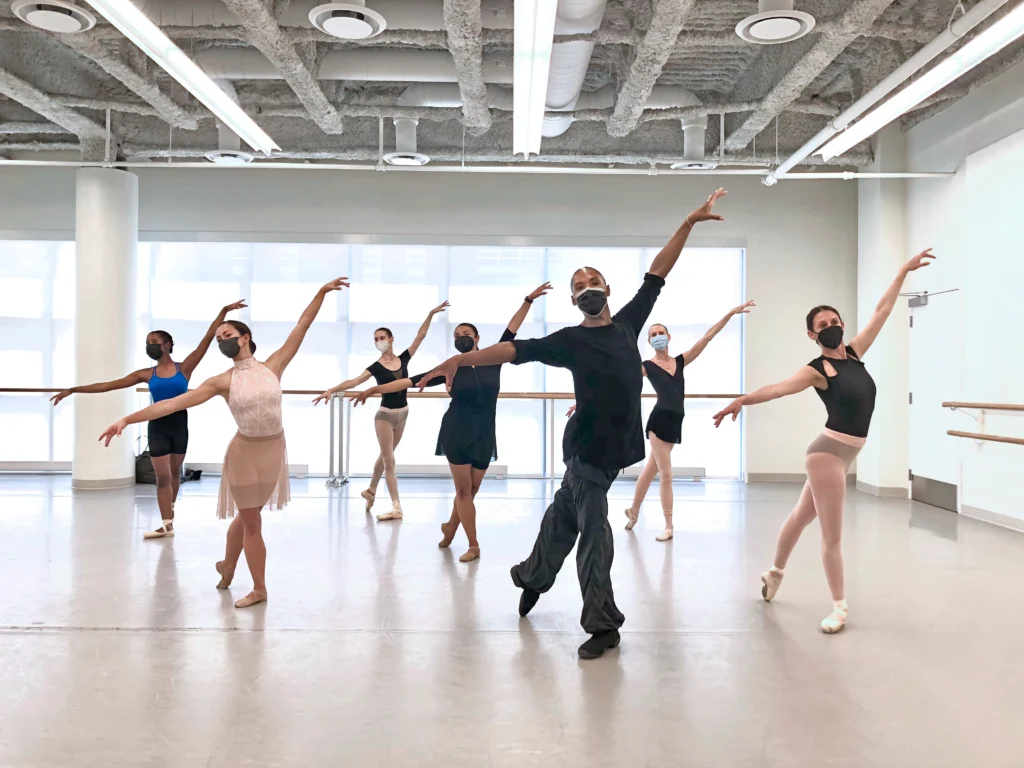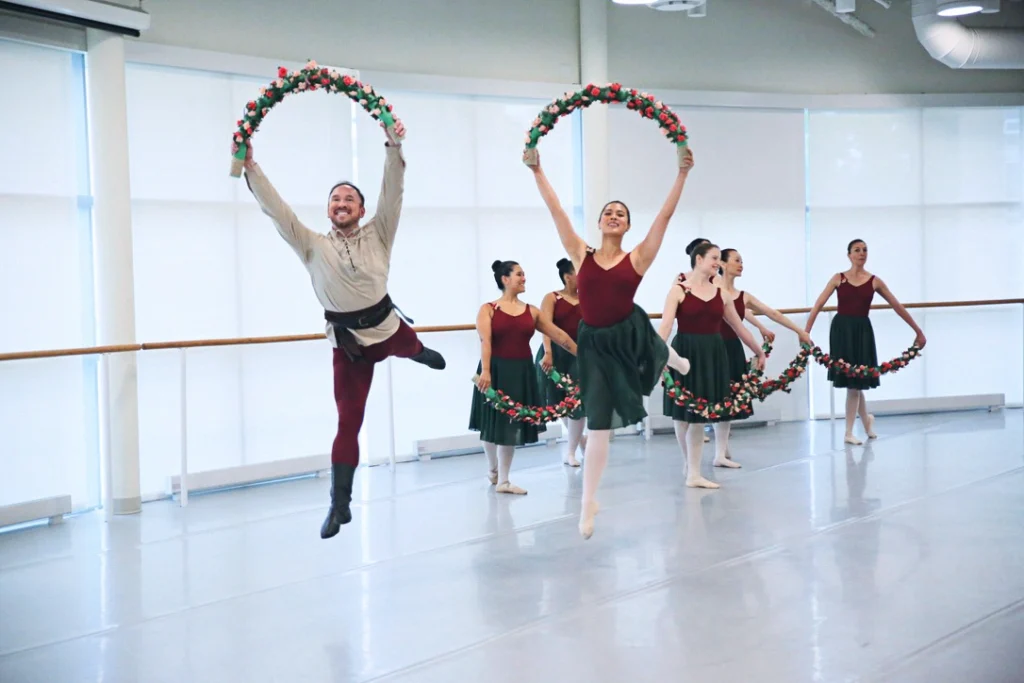
If your barre was bursting with bodies in class last year, you’re not alone. 2023 was a huge year for adult ballet students of all levels. Just ask Miya Hisaka, the head of the Adult Ballet Program at The Washington Ballet in Washington, DC.
“Every single week I go in, classes are packed. If you go there on a Saturday or Sunday, it’s just hopping,” she says. Most classes routinely reach full capacity at 25 students on weeknights and weekends, she says, and a renewed, vibrant energy radiates from the studio. “Everyone’s so passionate and enthusiastic. It’s a happy place for adults. They love it.”
It’s not just in cities like DC, either. Adult ballet classes are seeing surges everywhere from Los Angeles to New York. The reason behind the dramatic increase is partly—but not entirely—due to COVID-19. Some say the pandemic helped grow the momentum, but Hisaka thinks that was just one factor. “I think people, by the end of COVID, were so desperate to be able to go in person to class,” she says. “People really wanted to be a part of something again.”

Hisaka says that reworking TWB’s adult program to add several new levels, including sessions for absolute beginners, combined with a vision to “train adults, versus just teach,” has also helped attract new students. “Doctors, lawyers…people who were not ‘skinny minnies.’ Anybody who wanted always to dance but were maybe afraid, came to The Washington Ballet because I started offering these new classes,” she explains.
Shannon Kirk, an adult student in Charlotte, North Carolina, says the scores of virtual classes offered during the pandemic helped, but she thinks ballet was on the upswing before the world shut down. “The pandemic really helped people find classes that they could go to without having to actually be local.”
She also credits the diversity efforts being made by ballet companies with helping recreational dancers feel empowered to try ballet. “As ballet companies have started becoming more inclusive, maybe people started being able to realize that it’s not just for skinny, tall, white ladies.”
Kirk also gives props to social media for giving a platform to dancers like Colleen Werner, a therapist and body-neutrality advocate. Seeing dancers like Werner made her realize that ballet is truly for anyone with a desire to learn. “It makes me feel like things that I felt growing up, this thing that felt completely inaccessible to me—that’s just no longer there,” she says.
Kathryn Morgan, a former soloist with New York City Ballet who is the resident master teacher at the Dance Academy of Southern California (directed by her husband, Christopher Sellars), created a YouTube channel 10 years ago. Her upbeat videos on everything from Star Wars–themed ballet class to pointe shoe hacks have earned her thousands of fans, most of whom she thought were pre-professional dancers. “As the years went by, it occurred to me that half my audience were adult ballet dancers,” she says.
Some of Morgan’s students have reached out to her with stories of how they became interested in ballet after finding her videos and live classes in the early days of the pandemic. “Many of them felt safe because they were able to learn at home by themselves. Even though when they took my Zoom classes I could see them in the little box on the screen, it’s still different than walking into a ballet studio in a ballet outfit. It can be very intimidating.”

Morgan thinks that another reason for the surge is that folks are trying ballet after supporting companies as donors and theatergoers for years. Hisaka, on the other hand, sees it the other way: Many of TWB’s longtime donors and supporters come from the adult program’s student population. “It’s not only attending class, but they attend the ballet,” says Hisaka. “That’s a beautiful thing. It’s a wonderful way to educate people to art and ballet—by them wanting to see it and wanting to do it.” She says that it’s important for dancers to find teachers who will take them seriously, something that hasn’t always been the case for those 18+. “I think finally there is a community now where adults are coming back to ballet and they’re getting their own classes and they’re getting their own programs. And [they have] teachers like myself who love teaching them,” she says.
Both Hisaka and Morgan envision a bright future for adult ballet dancers, and the potential for those who continue to take class. “Dancing keeps you young, in heart and mind and body. It also gives people a sense of belonging,” Hisaka says. Morgan hopes to create more performance opportunities for her students, something she thinks has been lacking for adults. “Even if it’s not in a professional sense, it’s a way for them to continue to grow their joy for it.”




